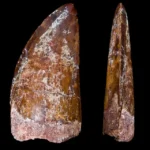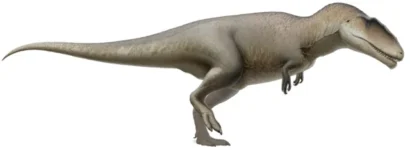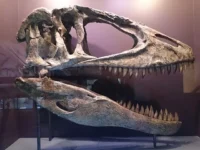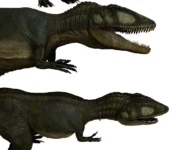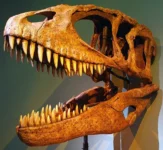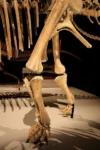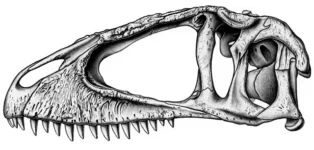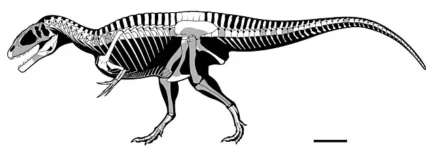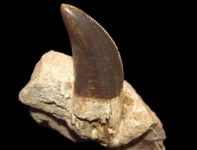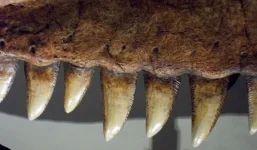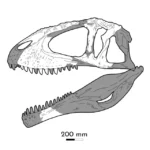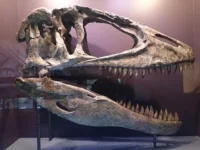Carcharodontosaurus
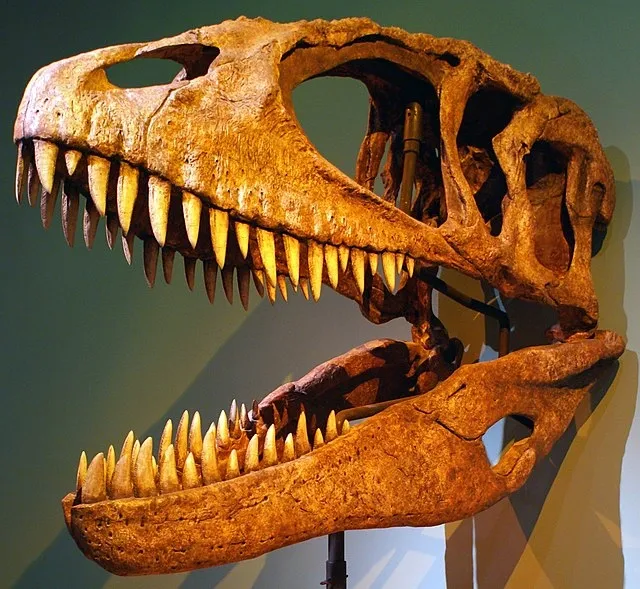
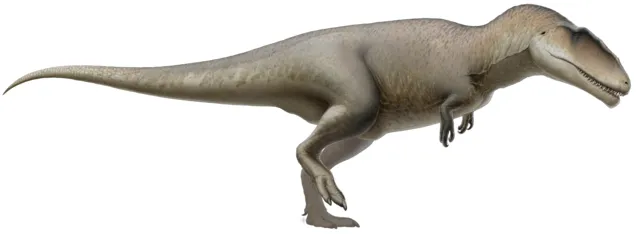

CARCHARODONTOSAURUS
Carcharodontosaurus was a large theropod dinosaur that lived during the mid-Cretaceous period, approximately 100 to 93 million years ago. Carcharodontosaurus is significant due to its size and its role as one of the top predators of its time. Its fossils help paleontologists understand the diversity and distribution of large theropods in the mid-Cretaceous period. Here are some key details about Carcharodontosaurus:
PHYSICAL CHARACTERISTICS
- Size: Carcharodontosaurus was one of the largest carnivorous dinosaurs, growing up to 39-44 feet (12-13.5 meters) in length.
- Weight: It weighed around 6 to 8 tons.
- Skull and Teeth: It had a massive skull measuring about 5.2 feet (1.6 meters) in length, equipped with long, serrated teeth resembling those of a great white shark, which is reflected in its name meaning “shark-toothed lizard.”
- Limbs: It had powerful hind limbs for running and shorter but robust forelimbs with three-fingered hands.
BEHAVIOUR AND ECOLOGY
- Diet: Carcharodontosaurus was a carnivore, preying on large herbivorous dinosaurs such as sauropods and ornithopods. Its sharp teeth were ideal for slicing through flesh.
- Hunting Techniques: It likely used its size and strength to overpower prey, using its sharp teeth to inflict deep, lethal wounds. It might have been an ambush predator, striking swiftly from cover.
- Habitat: It lived in what is now Northern Africa, in a variety of environments that ranged from coastal plains to lush, riverine forests.
FOSSIL DISCOVERIES
- First Discovery: The first Carcharodontosaurus fossils were discovered in the 1920s in the Sahara Desert, though these original fossils were destroyed during World War II. Subsequent discoveries in the 1990s and early 2000s have provided more complete specimens.
- Significant Finds: Important fossil discoveries have been made in regions like Egypt and Morocco, which have yielded skull fragments and other skeletal parts.
CLASSIFICATION
- Order: Saurischia
- Suborder: Theropoda
- Family: Carcharodontosauridae
- Genus: Carcharodontosaurus
- Species: The most well-known species is Carcharodontosaurus saharicus.
FUN FACTS:
- Shark-like Teeth: The name Carcharodontosaurus means “shark-toothed lizard” because its teeth closely resemble those of a great white shark, featuring serrations that were ideal for slicing through flesh.
- Giganotosaurus Relative: Carcharodontosaurus is closely related to another giant theropod, Giganotosaurus, which lived in South America. Both belonged to the family Carcharodontosauridae, showcasing a wide geographical distribution of these large predators.
- Massive Skull: Its skull alone could be as long as 5.2 feet (1.6 meters), making it one of the largest theropod skulls ever discovered. This massive head housed powerful jaws capable of delivering deadly bites.
- Lost and Found: The original Carcharodontosaurus fossils were destroyed during World War II when the museum in Munich, Germany, where they were housed, was bombed. However, new fossils discovered in the 1990s helped to reconstruct our understanding of this impressive dinosaur.
